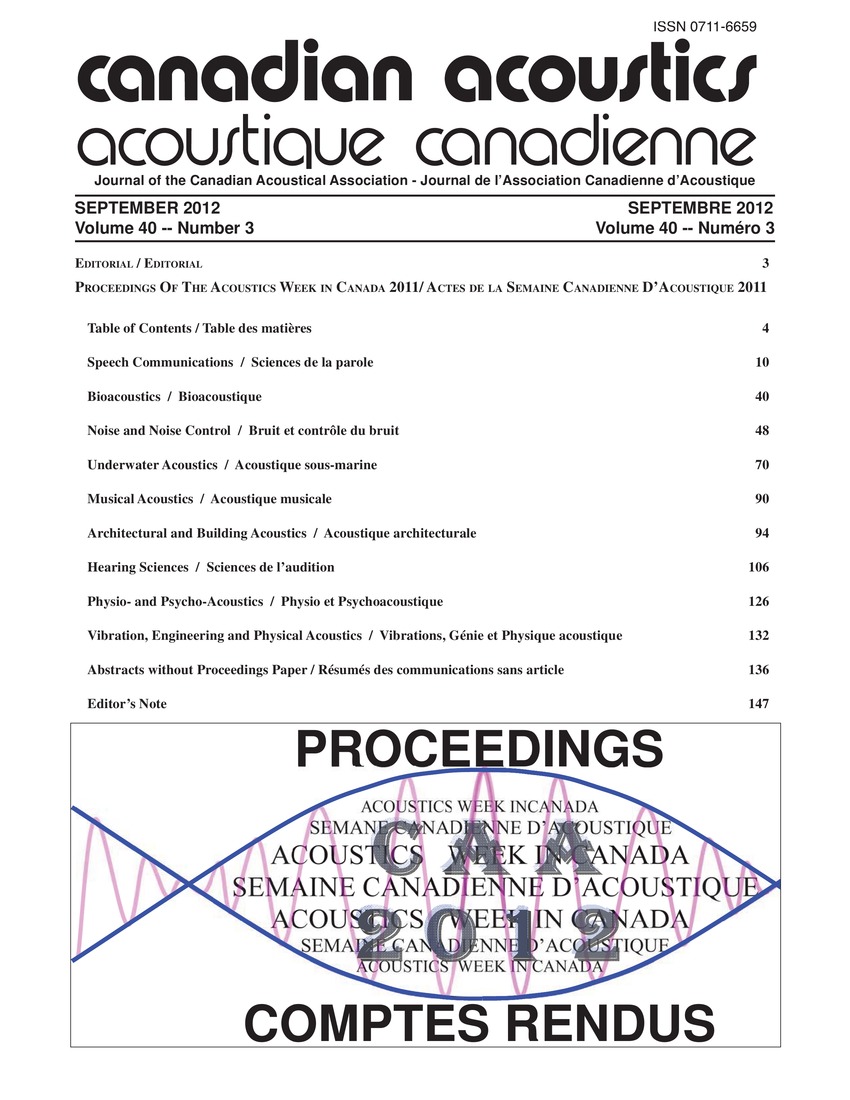Understanding the masking effects of noise on communication in natural environments
Keywords:
Animals, Audition, Bioacoustics, Communication, Physiology, Adverse effect, Anthropogenic noise, Auditory systems, Broadband noise, Hearing loss, Natural environments, Pure tones, Sleep disturbances, Sound detectionAbstract
Anthropogenic noises can cause a variety of adverse effects on birds and other wildlife. These effects include stress and physiological changes, auditory system damage from acoustic overexposure, and masking of communication and other important biological sounds. A second reason is that, while all humans have similar auditory capabilities and sensitivities, the same is not true for all animals. Still another issue is separating the various effects of noise. There are well documented adverse consequences of elevated noise on humans including hearing loss, masking, stress, physiological and sleep disturbances, and changes in feelings of well-being, and it would not be too surprising to find a similar range of effects in animals. The simplest kind of masking experiment is to measure the sound detection thresholds for pure tones in the presence of a broadband noise.Additional Files
Published
How to Cite
Issue
Section
License
Author Licensing Addendum
This Licensing Addendum ("Addendum") is entered into between the undersigned Author(s) and Canadian Acoustics journal published by the Canadian Acoustical Association (hereinafter referred to as the "Publisher"). The Author(s) and the Publisher agree as follows:
-
Retained Rights: The Author(s) retain(s) the following rights:
- The right to reproduce, distribute, and publicly display the Work on the Author's personal website or the website of the Author's institution.
- The right to use the Work in the Author's teaching activities and presentations.
- The right to include the Work in a compilation for the Author's personal use, not for sale.
-
Grant of License: The Author(s) grant(s) to the Publisher a worldwide exclusive license to publish, reproduce, distribute, and display the Work in Canadian Acoustics and any other formats and media deemed appropriate by the Publisher.
-
Attribution: The Publisher agrees to include proper attribution to the Author(s) in all publications and reproductions of the Work.
-
No Conflict: This Addendum is intended to be in harmony with, and not in conflict with, the terms and conditions of the original agreement entered into between the Author(s) and the Publisher.
-
Copyright Clause: Copyright on articles is held by the Author(s). The corresponding Author has the right to grant on behalf of all Authors and does grant on behalf of all Authors, a worldwide exclusive license to the Publisher and its licensees in perpetuity, in all forms, formats, and media (whether known now or created in the future), including but not limited to the rights to publish, reproduce, distribute, display, store, translate, create adaptations, reprints, include within collections, and create summaries, extracts, and/or abstracts of the Contribution.


